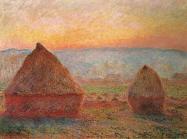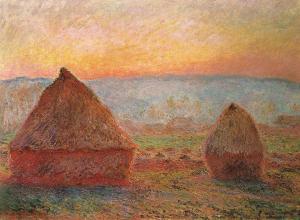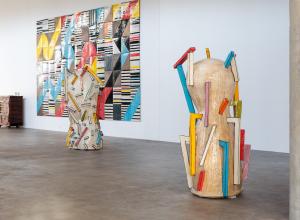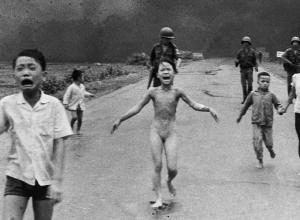The Harvard Art Museums have acquired an unparalleled collection of 443 printer’s proof photographs from Gary Schneider and John Erdman, establishing the museums as a primary site for the study, research, exhibition, and interpretation of contemporary photography. The collection will be featured in the exhibition Analog Culture: Printer’s Proofs from the Schneider/Erdman Photography Lab, 1981–2001, opening in May 2018 at the Harvard Art Museums.
In addition to this transformative collection, the artists have gifted the Schneider/Erdman Archive of photography, test prints, glass plate negatives, vintage material, and records from their Manhattan-based photography printing business, Schneider/Erdman Inc., as well as 30 European modernist photographs from their personal collection. These works, the recent oral histories conducted with Gary Schneider, John Erdman, and their collaborators, and an ongoing relationship with the artists will help establish the Harvard Art Museums as a principal repository for studying Schneider and Erdman’s work and process.
“We are extraordinarily lucky to have such a deep and strong relationship with these two thought-provoking artists and master craftsmen,” said Martha Tedeschi, the Elizabeth and John Moors Cabot Director of the Harvard Art Museums. “Through their generosity and commitment, Gary and John have helped preserve the knowledge and processes of photographic printmaking in the 1980s and ’90s for the benefit of generations to come.”
She added: “Not only have they provided exceptional works of art and flawless examples of the craft of printing photographs, but Gary and John also continue to be inspiring teachers, actively supporting our teaching and learning mission by leading trainings and workshops that invite students and scholars to explore American photography from this period. Together, the printer’s proof collection and the active involvement of the artists are truly transformative for the museums.”
The Harvard Art Museums’ relationship with Gary Schneider and John Erdman began in the late 1990s, when Deborah Martin Kao, the former Richard L. Menschel Curator of Photography, discovered Schneider’s photographic work. Calling him “one of the most thought-provoking photographers working today,” Kao organized the 2004 exhibition Gary Schneider: Portraits, which explored the artist’s innovative methods and his fascinating evolution in thinking about the nature of photographic portraiture. While collaborating with Schneider for the exhibition, Kao learned of Schneider’s career as a printer of photographic works and of the extraordinary collection of printer’s proofs that he and his partner, John Erdman, had accrued as part of the business they founded together in 1981.
Originally trained as an artist, Schneider developed a philosophy that facilitated remarkably effective collaborations with a wide range of artists and institutions when he began to work as a master printer of photographs. In all of his collaborations, Schneider sought to “catalyze the vision” of his clients. Rather than printing in his own style or with a standard set of methods, he approached each project on an individual basis. In order to facilitate the working process, and in partial exchange for their printing services, Schneider and Erdman adopted the standard printmaking practice of retaining a printer’s proof, a print set aside from each edition of photographs that they made. In the context of Schneider’s collaborative approach, the printer’s proof crystallizes the outcome of a series of decisions, arrived at by Schneider and his clients, and expressed through a precise combination of papers, toners, and other techniques specific to each photograph.
Over the course of three decades, Schneider and Erdman’s printer’s proof collection grew to represent hundreds of works of art by many of the most significant and influential artists of the day, including Richard Avedon, Matthew Barney, Peter Campus, James Casebere, Louise Dahl-Wolf, Eric Fischl, Robert Gober, Nan Goldin, Peter Hujar, Mary Ellen Mark, Gilles Peress, John Schabel, Lorna Simpson, and David Wojnarowicz, among many others.
“This is quite literally about preserving a time in history,” said Kao, who recently stepped down as chief curator at the Harvard Art Museums. “The 1980s were defined by the explosion of the medium as a form of both high cultural commodity and incisive cultural critique. Both tangents are represented in the Schneider/Erdman Printer’s Proof Collection. The acquisition of this pristine collection is significant for the way it allows the Harvard Art Museums to represent American contemporary photography during a pivotal era; and the additional gift of archival materials from Gary and John signals a true commitment to preserving their meticulous artistic process for the benefit of students and scholars, and the wider community.”
Schneider describes the printer’s proofs as a “true study collection.” “It’s exciting for us that the collection will be protected here,” he said. “When we talked to the artists represented in the collection, we told them that the proofs would be seen and used, and would be conserved and handled correctly; the artists were thrilled.”
The Harvard Art Museums acquired part of the collection through a combined purchase and gift in 2011, followed by a second acquisition of the remainder of the collection in late 2016. The newest gifts—the Schneider/Erdman Archive, conservation materials, and the collection of German and Czech modernist photography—came in 2017, while another gift of photographs is expected in 2018.
“It was always our goal and our desire to have the printer’s proof collection come to Harvard; but it was a long process, and we never would have guessed that it would finally find its way here along with so much of our supporting work,” said John Erdman. “We’re most excited about the educational purposes that these collections and their location at the Harvard Art Museums will support.”
Schneider and Erdman knew that the Harvard Art Museums would be the right home for the collections after visiting the museums’ Agnes Mongan Center more than two decades ago. The center gave students, scholars, and visitors the opportunity to directly study original works on paper from the Fogg Museum collections to set their own learning goals and chart their own path of inquiry. Today, the expanded Art Study Center continues this tradition through direct, in-person access to original works in all media from all of the museums’ collections.
What Schneider and Erdman observed in the Mongan Center was reminiscent of the way they learned their craft, handling and closely observing a variety of prints through visits to auction houses and flea markets. That process led them to collect modern European prints that educated their eye. The selection of works that Schneider and Erdman recently gifted from their personal collection bolsters the Busch-Reisinger Museum’s current photography holdings.
“These prints—including the first portrait by Bauhaus photographer Lucia Moholy to enter our collection—fit ideally into our existing holdings,” said Lynette Roth, Head of the Division of Modern and Contemporary Art and Daimler Curator of the Busch-Reisinger Museum. “Gary and John have an impeccable eye for and knowledge of photographic print, and they understand the strength of our collections and what we can uniquely do with them.”
For both Schneider and Erdman, the forthcoming exhibition Analog Culture: Printer’s Proofs from the Schneider/Erdman Photography Lab, 1981–2001, together with the years of conversations they have had with Harvard Art Museums curators, conservators, fellows, and students, helped them see that, like their prints, they themselves are repositories of knowledge about a specific period in history.
“One of the most significant outcomes of this project has been the gathering of oral histories from Gary, John, and their collaborators,” said Jennifer Quick, the John R. and Barbara Robinson Family Associate Research Curator in Photography at the Harvard Art Museums and curator of the Analog Culture exhibition. “It has become increasingly apparent that their photography lab is like a prism through which to understand key histories of these years, such as the AIDS crisis and its devastating impact on the art world, the culture wars of the 1980s and ’90s, and the transformation of New York’s economy and urban landscape between 1980 and 2001. With an emphasis on the processes of printing, the exhibition and its accompanying publication will invite reevaluation of this moment from the point of view of the practitioners who shaped its dynamics. This is only the beginning of the new scholarship that will result from studying these unparalleled collections.”
Schneider and Erdman have been actively involved in planning for the forthcoming exhibition, and will participate in much of the related programming, including academic forums and public talks. The artists are also supporting other professional development efforts at the museums, such as the 2017 Summer Institute for Technical Studies in Art (SITSA), designed for graduate students from art history programs across North America who are interested in broadening their experience with object-focused technical inquiry, methodologies, and instruction.
About Gary Schneider and John Erdman
Contemporary photographer Gary Schneider (b. 1954) came of age in the 1960s and ’70s in South Africa, living under that country’s oppressive apartheid system of governance. By the time Schneider enrolled at the University of Cape Town in 1975, the world of art and ideas—in particular, forms of conceptual art that used the body as a medium to explore phenomenology and behavior—had begun to provide an essential reprieve, allowing him to construct and control a space of his own.
In the late ’70s, Schneider left South Africa for New York City to work for Richard Foreman’s Ontological-Hysteric Theater. Here he would meet his partner, John Erdman, a veteran performer in conceptual film, video, and theatre production. To finance their lives as artists, the pair formed Schneider/Erdman Inc. in 1981, through which Schneider quickly rose to prominence as a master printer of other artists’ photographs. Schneider also became well known for his commercial work, such as his role in the production of Madonna’s Sex book and his work for The New York Times Magazine.
Schneider has a B.F.A. from the Michaelis School of Fine Art in Cape Town and an M.F.A. from the Pratt Institute in Brooklyn, New York. He is an associate professor of photography in the Mason Gross School of the Arts at Rutgers University in New Jersey.
Schneider has had solo exhibitions at Artists Space, New York City; the Musée de l’Elysée Lausanne, Switzerland; the International Center of Photography, New York City; the Contemporary Museum, Honolulu; the Harvard Art Museums, Cambridge, MA; the Museum of Photographic Arts, San Diego; and the Reykjavík Art Museum, Hafnarhús, Iceland; among others.
He has received numerous awards and grants, including an Alfred Eisenstaedt Award from the Columbia University Graduate School of Journalism and LIFE magazine; a National Endowment for the Arts grant; a Lou Stoumen Prize from the Museum of Photographic Arts; and a Guggenheim Fellowship. Among the public collections that have holdings of his work are: Art Institute of Chicago; George Eastman Museum, Rochester, NY; Harvard Art Museums, Cambridge, MA; Metropolitan Museum of Art, New York City; Museum of Fine Arts, Boston; National Gallery of Canada, Ottawa; Whitney Museum of American Art, New York City; and Yale University Art Gallery, New Haven, CT.
John Erdman was born in 1948 in New York City. In 1968, while studying at Tufts University, he saw Yvonne Rainer’s “The Mind Is a Muscle” (at Brandeis University) and Andy Warhol’s Chelsea Girls, among other films, inspiring him to move back to New York and begin working with visual artists who were exploring performance.
Erdman started working with Joan Jonas in 1970, and in 1972 Yvonne Rainer cast him in “This is the story of a woman who . . . .” As part of this piece, Erdman performed Rainer’s seminal dance “Trio A.” (The “non-dancer” performing technical dance was a trademark of her work.). Between 1975 and 1978 he worked with Richard Foreman in his Ontological-Hysteric Theater, with Robert Wilson (1979), and Karole Armitage (1983). He has also worked with filmmakers and videographers, most notably Peter Campus, Sheila McLaughlin, Charles Atlas, Heinz Emigholz, and Gary Schneider.
About Analog Culture
The museums’ upcoming exhibition Analog Culture: Printer’s Proofs from the Schneider/Erdman Photography Lab, 1981–2001 (May 19–August 12, 2018) takes the photographer/printer dynamic as its starting point, arguing that the productive and collaborative nature of this relationship reveals as much about the practice of making photographs as it does about the historical, social, and cultural significance of analog photography.
A cross-section of the Schneider/Erdman Printer’s Proof Collection will be shown, including works by Richard Avedon, Louis Faurer, Lorna Simpson, Louise Dahl-Wolfe, John Schabel, and Eric Fischl, as well as a selection of influential photography books for which Schneider served as printer. Larger bodies of work, such as Schneider’s meticulous reproduction of Czech modernist photography and his close collaborations with Robert Gober, Nan Goldin, and Peter Hujar, will also be examined.
Analog Culture is curated by Jennifer Quick, the John R. and Barbara Robinson Family Associate Research Curator in Photography at the Harvard Art Museums. The exhibition will be accompanied by a print publication as well as an online Special Collection. The Harvard Art Museums are the sole venue for the exhibition.
Photography Collections at the Harvard Art Museums
The Harvard Art Museums’ photography holdings have a particular strength in 20th-century American documentary and contemporary photography, with an emphasis on diverse and alternative photographic processes. The holdings include photographs, negatives, and related materials in the collections of the Fogg and Busch-Reisinger Museums, and select holdings in the Arthur M. Sackler Museum collections.
The collection of documentary photography, comprising nearly 35,000 images and 40,000 negatives, is unparalleled. The collection was strengthened considerably when Harvard’s Carpenter Center for the Visual Arts transferred their photographic collections to the Harvard Art Museums in 2002.
Other strengths include 19th-century photography, such as Southworth & Hawes daguerreotypes, Alexander Gardner’s Sketch Book documenting the Civil War, and photographs by Timothy O’Sullivan and Mathew Brady; social documentary (the Ben Shahn Collection, the Social Museum Collection, the Boston Elevated Railway Negative Collection, and the Gordon Ward Gahan Collection); and professional photography (the American Professional Photographers Collection). Other important holdings include documentary and experimental photomontage and camera-less photography in the museums’ extensive Bauhaus collection, including 18,000 negatives and slides by Lyonel Feininger that offer a comprehensive view of the artist’s extended engagement with photography.
The museums’ growing contemporary holdings began with Diane Arbus’s Box of Ten Photographs, acquired in 1972 by Davis Pratt, the Fogg Museum’s first curator of photographs. The collections also include other strengths such as postwar subjective photography (Otto Steinert, Peter Keetman), and the Düsseldorf school (Andreas Gursky, Candida Hofer). The two-phase acquisition of the Schneider/Erdman Printer’s Proof Collection brings 443 photographs from the 1980s and ’90s, archival materials, and artist’s research materials to the museums’ holdings, providing a rich repository for learning about the darkroom and activities of a photography lab, as well as about broader cultural issues attached to this era of photography. In addition, the South Asian Photography Initiative offers a growing repository of 100 works by 15 modern and contemporary Indian and South Asian photographers.
These collections enable scholars, students, and the public to closely investigate the medium’s evolution. While developing holdings of photographs chronologically and geographically, the museums have maintained a strong and cohesive collection of contemporary work, including hybrid practices and time-based media. The museums are rooted in a history of collecting and teaching with photographs, and the collections have been shaped by diverse curatorial expertise.
The Harvard Art Museums are a key repository for the practice, scholarship, and teaching of photography. All objects in the collections not currently on display in the galleries may be viewed, by appointment, in the museums’ Art Study Center.
About the Harvard Art Museums
The Harvard Art Museums house one of the largest and most renowned art collections in the United States, and are comprised of three museums (the Fogg, Busch-Reisinger, and Arthur M. Sackler Museums) and four research centers (the Straus Center for Conservation and Technical Studies, the Center for the Technical Study of Modern Art, the Harvard Art Museums Archives, and the Archaeological Exploration of Sardis). The Fogg Museum includes Western art from the Middle Ages to the present; the Busch-Reisinger Museum, unique among North American museums, is dedicated to the study of all modes and periods of art from central and northern Europe, with an emphasis on German-speaking countries; and the Arthur M. Sackler Museum is focused on Asian art, Ancient Mediterranean and Near Eastern art, and Islamic and later Indian art. Together, the collections include approximately 250,000 objects in all media. The Harvard Art Museums are distinguished by the range and depth of their collections, their groundbreaking exhibitions, and the original research of their staff. Integral to Harvard University and the wider community, the museums and research centers serve as resources for students, scholars, and the public. For more than a century they have been the nation’s premier training ground for museum professionals and are renowned for their seminal role in developing the discipline of art history in the United States. The Harvard Art Museums have a rich tradition of considering the history of objects as an integral part of the teaching and study of art history, focusing on conservation and preservation concerns as well as technical studies.
The Harvard Art Museums’ 2014 renovation and expansion carried on the legacies of the three museums and united their remarkable collections under one roof for the first time. Renzo Piano Building Workshop preserved the Fogg Museum’s landmark 1927 facility, while transforming the space to accommodate 21st-century needs. The museums now feature 40 percent more gallery space, an expanded Art Study Center, conservation labs, and classrooms, and a striking glass roof that bridges the facility’s historic and contemporary architecture. The three constituent museums retain their distinct identities in the facility, yet their close proximity provides exciting opportunities to experience works of art in a broader context. harvardartmuseums.org
Exhibitions, Events, and News
Our Special Exhibitions Gallery presents important new research on artists and artistic practice, and our University Galleries are programmed in consultation with Harvard faculty to support coursework. Visit the Exhibitions page for information on current and upcoming installations. Visit the museums’ Calendar to learn more about lectures, workshops, films, performances, special events, and other programs that are held throughout the year. Check out Index, our multimedia magazine, to keep up with what’s happening at the Harvard Art Museums.
The Harvard Art Museums receive support from the Massachusetts Cultural Council.
For more information, please contact
Lauren Marshall
Associate Director of Communications
Harvard Art Museums
617-495-4750
lauren_marshall@harvard.edu





















![DEl Kathryn Barton [Australian b. 1972] the more than human love , 2025 Acrylic on French linen 78 3/4 x 137 3/4 inches 200 x 350 cm Framed dimensions: 79 7/8 x 139 inches 203 x 353 cm](/sites/default/files/styles/image_5_column/public/ab15211bartonthe-more-human-lovelg.jpg?itok=wW_Qrve3)


